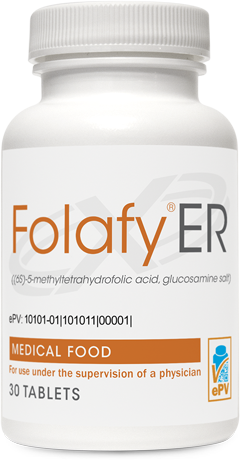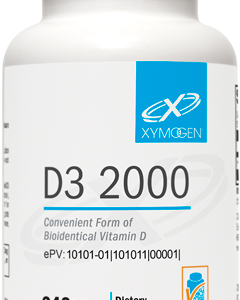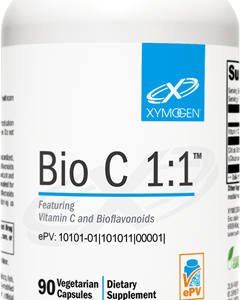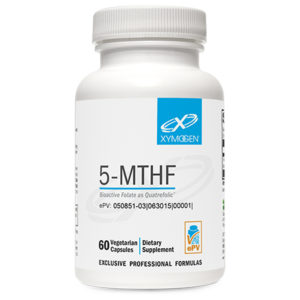Scientific Information/Data
Folafy ER provides a proprietary biologically active folate, 5-MTHF glucosamine salt, also known as Quatrefolic®. Research suggests that the involvement of folate (specifically 5-MTHF) in neurotransmitter synthesis is primarily responsible for its effects on mood and cognition. Folate, in the form of 5-MTHF, bypasses the need for folate to be converted to its active form and overcomes the challenge of improving folate status in individuals with certain genetic polymorphisms.[1]
5-MTHF is the active, circulating form of folate and the main form found naturally in food. Unlike supplementary folic acid, which requires enzymatic conversion to become biologically active, 5-MTHF is able to penetrate cellular membranes without being metabolized.
MTHFR Polymorphism Methylenetetrahydrofolate reductase (MTHFR) is an enzyme necessary for the conversion of folate to 5-MTHF. There is a significant association between MTHFR polymorphism and depression risk.[2] 5-MTHF plays a key role in the manufacture of S-adenosylmethionine (SAMe); methylation of DNA, proteins, neurotransmitters, and phospholipids; and remethylation of homocysteine to methionine.[1,3,4] Nutrigenomic research indicates that some individuals, due to their unique genetic patterns and expression, do not produce adequate or effective MTHFR.[1,5]
Research has shown racemic 5-MTHF to be seven times more bioavailable than folic acid.[6] In other research, 5-MTHF was more effective than folic acid at increasing total plasma folate concentrations in subjects with the TT and CC genotype of the 677C→T mutation of MTHFR.[7]
Quatrefolic Quatrefolic is a new dietary ingredient (NDI) that shows enhanced stability and bioavailability when compared to the calcium salt form of 5-MTHF. In a direct comparison between Quatrefolic, (6S)-5-methyltetrahydrofolate calcium salt, and folic acid in rats, Quatrefolic demonstrated a much higher absorption rate within the first two hours (1918.8, 1061.9, and 614.0 nmol/l plasma, respectively).[8] In a single-dose, balanced, two-sequence, two-period, twotreatment, randomized, crossover human study, Quatrefolic showed better bioavailability (+10%) than (6S)-5-MTHF calcium salt (Ca-L-5-MTHF).[9]
5-MTHF and Depression According to some researchers, depression is very common. In fact, it is estimated that one-fourth of the US population will have a depressive episode sometime in their lives.[1] 5-MTHF is involved in the metabolic management of low 5-MTHF levels associated with depression by supporting the body’s ability to regulate the biosynthesis of brain neurotransmitters, such as serotonin, norepinephrine, and dopamine.[1,10] For instance, 5-MTHF participates in the remethylation of homocysteine to create methionine. Furthermore, SAMe is the downstream metabolite of methionine, but it needs 5-MTHF to be manufactured. SAMe is believed to be involved in numerous biochemical methyl donation reactions, including reactions forming monoamine neurotransmitters.[1] Researchers believe that inadequate 5-MTHF, as a consequence of folate deficiency or from the inability to sufficiently convert folic acid to 5-MTHF, impacts the complex balance of brain neurotransmitters.[1,11,12] Supplementation with oral 5-MTHF has proven beneficial in depressive disorders.[11,13]
Adjunctive Use of 5-MTHF in Major Depressive Disorder Folafy ER is indicated for the distinct nutritional requirements of individuals who have suboptimal 5-MTHF in their cerebrospinal fluid, plasma, and/or red blood cells. It is also indicated for those who have major depressive disorder (MDD), with particular emphasis as adjunctive support for individuals who are on an antidepressant. Folafy ER is indicated regardless of MTHFR C677T polymorphism genotype.
References
1. Miller AL. The methylation, neurotransmitter, and antioxidant connections between folate and depression. Altern Med Rev. 2008 Sep;13(3):216-26. [PMID: 18950248]
2. Rai V. Genetic polymorphisms of methylenetetrahydrofolate reductase (MTHFR) gene and susceptibility to depression in Asian population: a systematic meta-analysis. Cell Mol Biol (Noisy-le-grand). 2014;60(3):29-36. [PMID: 26177556]
3. Scaglione F, Panzavolta G. Folate, folic acid and 5-methyltetrahydrofolate are not the same thing. Xenobiotica. 2014 May;44(5):480-8. [PMID: 24494987]
4. Papakostas GI, Cassiello CF, Iovieno N. Folates and S-adenosylmethionine for major depressive disorder. Can J Psychiatry. 2012 Jul;57(7):406-13. [PMID: 22762295]
5. Bueno O, Molloy AM, Fernandez-Ballart JD, et al. Common polymorphisms that affect folate transport or metabolism modify the effect of the MTHFR 677C→T polymorphism on folate status. J Nutr. 2015 Nov 11. pii: jn223685. [Epub ahead of print] [PMID: 26561410]
6. Willems FF, Boers GH, Blom HJ, et al. Pharmacokinetic study on the utilisation of 5-methyltetrahydrofolate and folic acid in patients with coronary artery disease. Br J Pharmacol. 2004 Mar;141(5):825-30. [PMID: 14769778]
7. Prinz-Langenohl R, Brämswig S, Tobolski O, et al. [6S]-5- methyltetrahydrofolate increases plasma folate more effectively than folic acid in women with the homozygous or wild-type 677C→T polymorphism of methylenetetrahydrofolate reductase. Br J Pharmacol. 2009 Dec;158(8):2014-21. [PMID: 19917061]
8. Quatrefolic® Bioavailability in Rats. [available from the manufacturer Gnosis S.p.A. upon request]
9. Crossover Comparative Bioavailability Study of 5-Methyltetrahydrofolate Glucosamine Salt (GN10G) Compared to the Reference Metafolin® in Healthy Volunteers. IPAS-5MTHFA-583-09 final report. Desio, Italy: Gnosis S.p.A.; March 15, 2010: 1-33. [available from the manufacturer Gnosis S.p.A. upon request]
10. Fava M, Mischoulon D. Folate in depression: efficacy, safety, differences in formulations, and clinical issues. J Clin Psychiatry. 2009;70 Suppl 5:12-17. [PMID: 19909688]
11. Godfrey PS, Toone BK, Carney MW, et al. Enhancement of recovery from psychiatric illness by methylfolate. Lancet. 1990 Aug 18;336(8712):392-95. [PMID: 1974941]
12. Peerbooms OL, van Os J, Drukker M, et al. Meta-analysis of MTHFR gene variants in schizophrenia, bipolar disorder and unipolar depressive disorder: evidence for a common genetic vulnerability? Brain Behav Immun. 2011 Nov;25(8):1530-43. [PMID: 21185933]
13. Guaraldi GP, Fava M, Mazzi F, et al. An open trial of methyltetrahydrofolate in elderly depressed patients. Ann Clin Psychiatry. 1993 Jun;5(2):101-15. [PMID: 8348200]







Reviews
There are no reviews yet.